Title : Nutrition-related welfare of the red deer (Cervus elaphus) in organic rearing systems
Abstract:
The aim of the study was to analyze selected elements of the nutritional status of the red deer (Cervus elaphus) reared on organic farms. The botanical composition of the meadow-pasture feeding ground and water resources were analyzed. The 109-ha farm had an ecological certificate covering the meadows and pastures with ponds and watercourses, the animals, and the entire rearing process. On average, 96 red deer were reared on the farm each year with the density of 0.20 LU/ha per pen. Floristic analyses of the feeding ground were carried out once a month from April to October. The plant species identified in the plant cover were compared with the model structure of annual food resources of free-living deer. The study showed that the animals had unlimited access to rich water resources. In the feeding grounds, 119 species of plants were identified. The model structure of the natural food resources for free-living deer is composed of 33.10% of shoots of trees and shrubs, 24.40% of shrublets, 20.20% of herbaceous dicotyledonous species, 19.80% of grasses, sedges, and rushes, and 2.50% of ferns, clubmosses, and horsetails. The food resources on the analyzed farms were as follows: 14.29% of shoots of trees and shrubs, 4.20% of shrublets, 58.82% of herbaceous dicotyledonous plants, 19.33% of sedges and rushes, and 3.36% of ferns, clubmosses, and horsetails. To sum up, the diet of the red deer from the organic farm was dominated by dicotyledonous species, whereas insufficient amounts of shrublets and shoots of trees and shrubs were available. Nevertheless, this did not lead to deterioration of the welfare of the animals.



